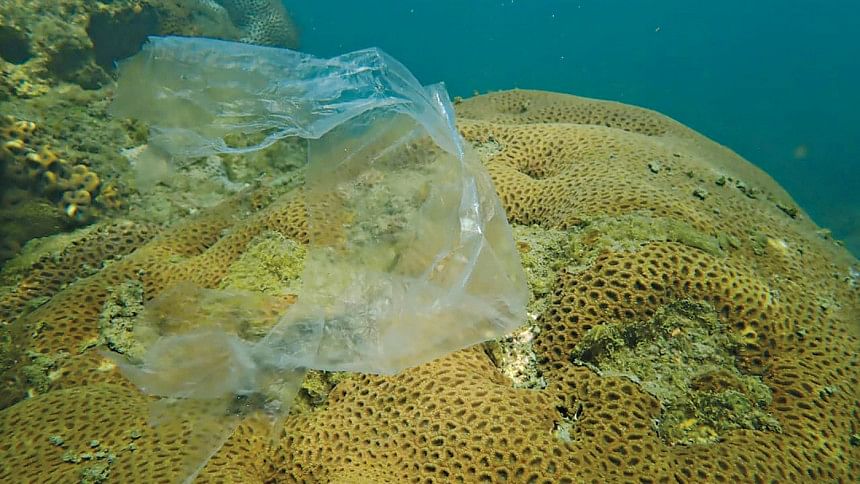St Martin’s Island: Clean-up effort to be launched from mid-Feb

A clean-up effort will be launched in St Martin's Island under Teknaf upazila of Cox's Bazar in mid-February following suspension on tourism activities for next nine months.
According to the directives of the Ministry of Environment, Forest and Climate Change, the Cox's Bazar district administration will coordinate the entire operation, said Mohammad Salauddin, deputy commissioner of the district.
"The tourism season has ended and we are now focusing on reviving the island's natural environment which sustained damages due to tourism. Local residents will be involved in the activities to boost their income," he said.
"Earlier, in December and January, a total 14 tonnes of plastic and polythene wastes were collected from the island in exchange for food items including rice, oil, lentils and biscuits," the DC added.
The Ministry of Environment, Forest, and Climate Change in October last year restricted tourist visits to just three months of the year -- November, December, and January – with a daily limit of 2,000 tourists, in order to reduce pollution and protect the island's environment and biodiversity.
The Department of Environment in 1999 declared St Martin's Island an Ecologically Critical Area. In 2023, the government designated 1,743 square kilometres of the Bay of Bengal adjacent to St Martin's Island as a protected area under the Wildlife Act.
The first initiative to control tourism on the island was taken in August 2020. The government assigned the Center for Geographical Information Services (CEGIS) to conduct a study. Following the research, CEGIS concluded that the primary cause of environmental destruction in St Martin's Island is unregulated tourism, adding that tourists should not be allowed to stay overnight on the island under any circumstances.
Although the island has a daily capacity of 2,000 visitors, some 10,000 to 12,000 tourists travelled there every day even in last year. At least 230 hotels and motels have been established illegally without any waste management systems, leading to an accumulation of sewage and plastic wastes across the island.
A study found that the island's water contains 10 times more bacteria than the mainland. Crabs are being caught for tourist consumption, while boat traffic and campfires are endangering three rare species of sea turtles. The excessive number of tourists is also causing a sharp decline in groundwater levels.
In 1980, the island had 141 coral species, but by 2016, the number dropped to 41. Research organisations warned that without urgent conservation efforts, St Martin's Island could lose all the coral species by 2045.
"We have to save St Martin's Island to carry on the tourism business," said Abu Morshed Chowdhury, president of Cox's Bazar Chamber of Commerce and Industries.
"The reduction in tourist numbers is now helping to protect the island's biodiversity," said Dipak Sharma, president of Cox's Bazar Forest and Environment Conservation Council.
Md Zamir Uddin, deputy director of DoE in Cox's Bazar, said they are assessing the damage sustained due to tourism in the island and how much manpower is needed to organise the clean-up activities in order to set the work plan to this end.
Mujibor Rahman, chairman of St Martin union parishad, said people of island and UNDP staffs have already begun cleaning up the beaches and other areas after the tourists left the coral island.
The hotel owners and their staffs, who came from outside, are wrapping up their belongings to leave the island, he added.


 For all latest news, follow The Daily Star's Google News channel.
For all latest news, follow The Daily Star's Google News channel. 



Comments